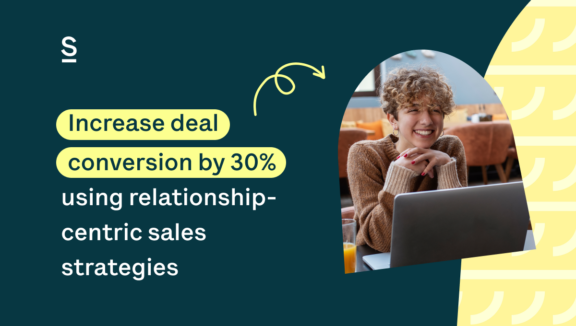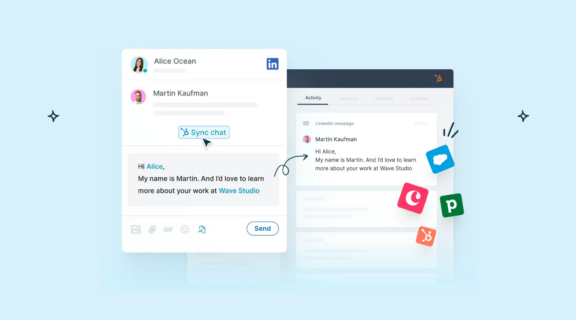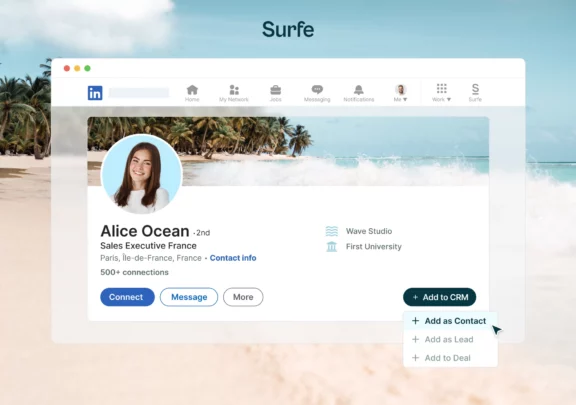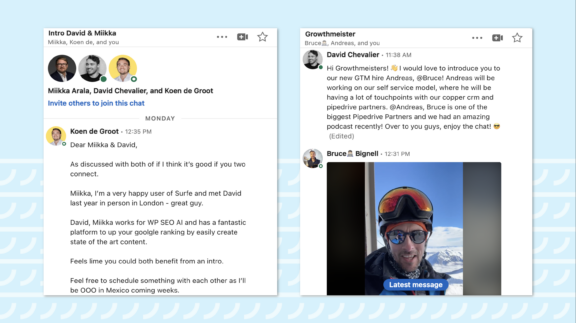Increase deal conversion by 30% using relationship-centric sales strategies

Surfe’s CEO and co-founder, David Chevalier, sat down with the CEO of Copper CRM, Steve Holm.
They discussed how relationship-centric sales are disrupting the B2B SaaS industry, which has previously been transaction-focused.
Here are the top 5 tips you can implement today to increase your own deal conversions by 30%.
Key Highlights
Tip #1: Leverage Your CRM
Tip number one is an absolutely crucial one. If you attended our Surfe Sesh, you’ll have heard Steve say several times, “Your CRM is only as good as the data that is inside it.”
In other words, “If it’s not in the CRM, it doesn’t exist.”
This doesn’t mean just having a complete CRM. It means having a CRM complete with 100% accurate data. If your CRM is filled with inaccurate data then your CRM is even worse.
Manual data entry into the CRM is always going to result in errors of some level. To minimize this, Steve shared a great tip:
At Copper they aim for total data input automation, meaning zero input and 100% accuracy.
Another way to leverage your CRM is to make it central to the activity of all teams.
Sales, CS, Marketing, and every other team should all be using the same CRM. This allows your relationship with the customer to follow the whole journey.
This includes after the sale. 80% of sales reps say maintaining customer relationships after the close is increasingly important.
If you have to jump to other tools after the sale then it’s a sign that you don’t properly understand the context of what happened before.
“If you’ve sold someone something, now you need to deliver it to them and maintain it. It’s a big miss if you’re trying to do that in a different tool.” -Steve Holm
If you’re able to keep the full customer lifecycle data in one tool, you can track all of the interactions, documents, and communications, end-to-end, and then create repeat business too.
Tip #2: Personalize At Scale
“The big one for me: It’s about customers. Understanding them, spending time with them, getting to know them, getting to know their pain points. Creating something compelling and unique for them, and executing on that.”
Relationships are personal. That means you’re obliged to personalize the buying experience if you want to make it relational as opposed to transactional. And, no. This doesn’t mean using a variable to put their first name at the start of an email. It means personalizing the entire experience.
Here is what David and Steve say personalization looks like at scale in its simplest form:
- Spend time with your customers (before and after the sale)
- Really get to know them
- Find what drives them as well as their pain points
- Create a unique experience and product
- Gather overall insight into your ICP as a whole
- Automate messaging that is crafted for highly qualified leads
- Provide value
“You can design the coolest product in the world, but if that doesn’t translate to customer value, then you’re not going to get business results.”

Tip #3: Monitor Job changes
31% of B2B professionals said that social selling allowed them to build deeper relationships with their clients.
If an existing customer is a happy customer, they’re likely to advocate for your product or service when they change companies.
Again, a CRM is only as good as the data inside of it.
So it’s important that your CRM is aware when the contacts in it change roles.
You can simply install a Chrome extension to make this as automatic as possible.
Surfe connects LinkedIn to your CRM and then performs a scan of your CRM contacts each day on LinkedIn to see if they’ve changed roles. If it finds a contact in your CRM that has updated information on your CRM, it will alert you and give you the option of automatically updating their data in your CRM. It means a 100% clean CRM 100% of the time.

You can even automate outreach for this. When a data point or condition is met (a CRM contact changing company), you can have an automatic email sequence that reaches out to them to congratulate them on the new role.
And since your CRM is now connected to LinkedIn, this connection will become the powerhouse of your social selling.
Some industries even see revenue increases of up to 67% thanks to social selling and the trust that relational sales strategies build.
Tip #4: Leverage Clients For Negotiations
“A lot of our customers come from referrals.”
Steve says this can happen in two ways.
1. Direct referrals:
If you build trust with your customers, you can ask for referrals, but if you build a relationship, a lot of it will come naturally.
If the relationship you have built with the customer is good enough, they will bring new customers to you and you won’t need to ask. That can be when they talk to a friend or colleague who has a similar pain point or it can be when they move to a new role.
2. Indirect referrals:
Reviews on Google and platforms are crucial as well as having a high NPS score.
More reviews + better reviews = your product/service gets found more often.
Again, this can be automated and you can politely ask for a review after a positive interaction with a customer.
You can then back that up with testimonials on your website.

Tip #5: Ask For And Make Intros
Referrals are also a way to build a small community between your users.
Don’t be afraid to introduce your customers to each other or to introduce existing customers with potential ones.
When you can introduce your customers to each other:
- When they working in the same field and could learn from each other
- When you think there are co-marketing or co-selling opportunities available to them both
- If you’re trying to upsell additional products or features to one customer that another has already tried
- When one or both have a pain point the other can solve
- Literally any other reason: “I wanted to introduce you to {insert_name}. What they are doing at {insert_company} is incredible and I think you’d agree.”
When you can introduce your customers to a potential customer:
- Here’s the interesting part – it’s just all of the reasons above.
- Remember – we’re focusing on the relationship, not the transaction
- Introductions are genuine and personal and help to develop and build trust in relationships
This is human to human advocacy at its most powerful. And after all, whether you’re in B2C or B2B, we’re all human. Every sale benefits from being a human to human relationship, not an employee to employee transaction.
Connect your CRM to LinkedIn to improve relaitonal sales
Automate data entry to your CRM, personalize at scale, and monitor job changes when your CRM is connected to LinkedIn with Surfe.
Let’s wrap it up!
It’s time to transform your sales strategy from transactional to relationship-centric.
You can do this and start seeing benefits right now by leveraging your CRM for automation and accuracy, personalizing customer interactions at scale, monitoring job changes through CRM for social selling, utilizing client referrals and reviews for negotiations, and fostering introductions for community building and trust.
Relationship centric sales aim to increase deal conversions by 30% by focusing on building strong, value-driven customer relationships.
If you’ve enjoyed this article, you might also like:


